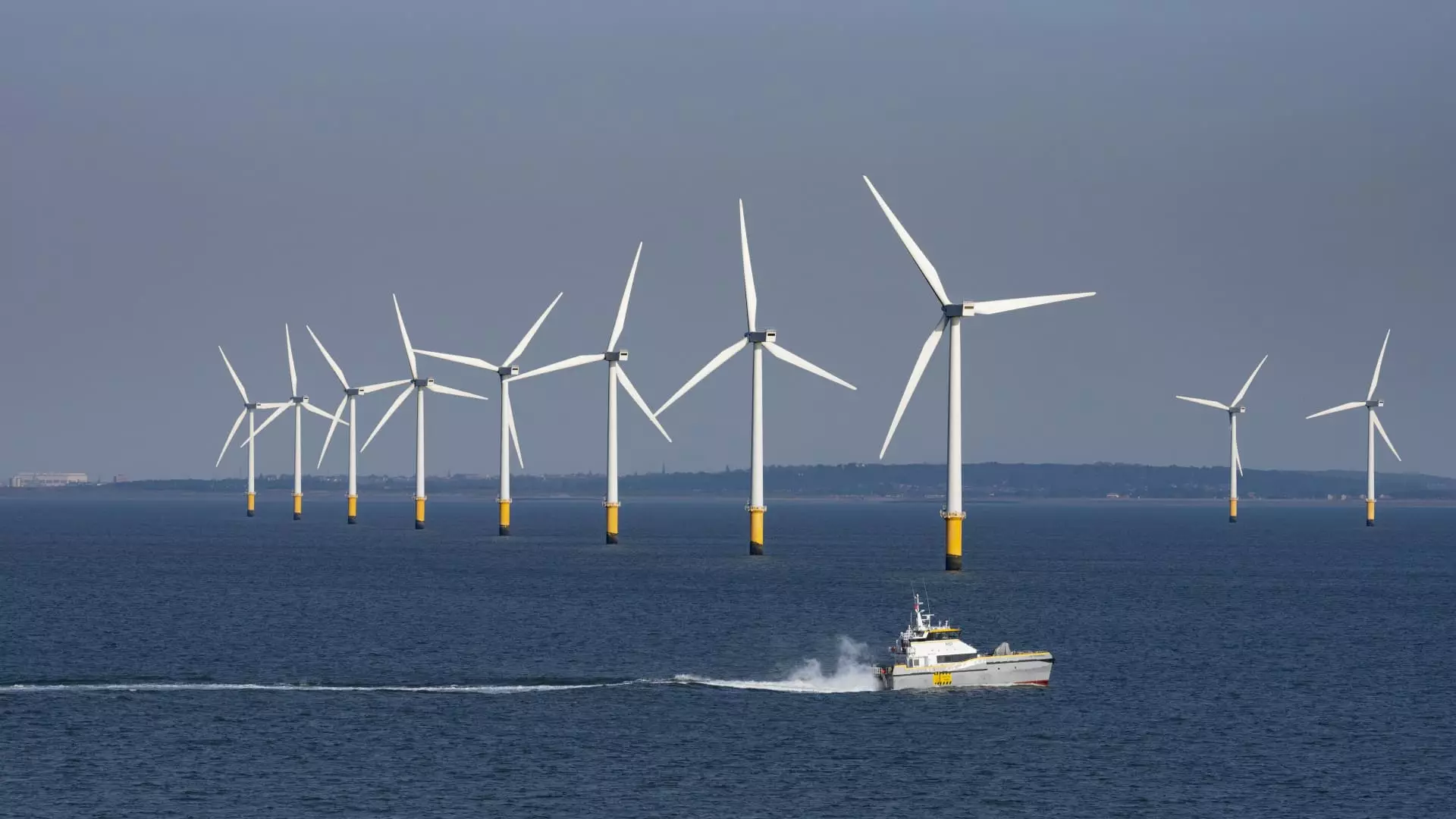The recent developments in U.S. energy legislation might seem like a victory for clean energy advocates and European investors eyeing opportunities across the Atlantic. However, beneath this glossy veneer lies a troubling reality: the U.S. government’s approach to renewable energy is riddled with contradictions and short-term incentives that threaten to derail genuine progress. While stock markets and European firms briefly cheered the political process, the larger picture reveals a sector perpetually on shaky ground, caught between political wavering and a lack of substantive commitment.
Despite superficial optimism driven by legislative tweaks, the core issues remain unaddressed. The removal of certain tax provisions or deadline adjustments, though seemingly positive, fail to confront fundamental challenges: inconsistent policy support, unreliable funding mechanisms, and a stark lack of a cohesive long-term vision. European investors are increasingly cautious—not because the opportunities are diminishing, but because the risk landscape has become more convoluted and unpredictable. The U.S. continues to oscillate between promotion and neglect, making it an inherently unstable environment for renewable investments that require stability and certainty.
The Real Stakes: Short-Lived Gains and Long-Term Risks
The stock market’s reaction, particularly among wind turbine manufacturers and developers like Vestas, Orsted, and Nordex, was driven by immediate relief—an apparent easing of regulatory constraints that could have otherwise stifled growth. Yet this relief is ephemeral if the broader policy trajectory does not evolve into genuine structural support. The removal of a tax on foreign components or the extension of project deadlines provides temporary windfalls but does little to establish a resilient renewable economy.
At its core, the legislation appears to be more of a tactical maneuver than a strategic leap forward. By avoiding what analysts called a “worse-case scenario,” policymakers sidestepped immediate collapse but revealed their inability—or unwillingness—to commit to decarbonization goals that are both ambitious and achievable. The U.S. policy framework still perpetuates a fragmented approach, where clean energy becomes an afterthought rather than a centerpiece of national infrastructure plans.
Moreover, the focus on short-term project commencements—merely spending 5% of capital to “start” projects—raises questions about the durability of these initiatives. Will this just ignite a surge of superficial activity that fizzles out before truly transforming the grid? The risk is that these half-measures will encourage an influx of incomplete or unsustainable projects, ultimately wasting resources and spreading disillusionment within the sector.
European Sensibilities and the Danger of American Inconsistency
European markets, known for their cautious and often more disciplined approach to renewables, watch the U.S. with a mix of skepticism and concern. While some major firms like RWE, EDPR, and Iberdrola derive significant portions of their capacity from the American market, they have become increasingly wary of a political environment that can flip course with each election cycle. The recent legislative amendments rekindle doubts about America’s capacity to remain a reliable partner and leader in the global clean energy movement.
European energy firms have shown resilience and strategic flexibility, deploying capital across various geographies and technologies to hedge against policy oscillations in the U.S. Nonetheless, the risk remains that ongoing uncertainty—accentuated by the apparent rollback of Biden-era initiatives—could lead to project cancellations or delays, undermining the previously optimistic outlook. While European utilities are prepared for a degree of volatility, the persistent inconsistency hampers their ability to plan long-term infrastructure investments, which are crucial for meeting climate commitments.
One must question whether U.S. policymakers truly grasp the magnitude of what they could be jeopardizing by prioritizing short-term political wins over long-term climate stability. The country’s reputation as a leader in clean energy and innovation is at stake. Without committed, unwavering support, the U.S. risks reverting to a position of technological and economic laggard, which would have ripple effects worldwide.
Blunt Reality: The Center-Left’s Crucial Role in Navigating the Turmoil
As someone skeptical of overly partisan narratives, I believe that the path forward for U.S. renewable policy—and, by extension, global climate progress—must be rooted in pragmatic, centrist liberal values. These values emphasize deliberate, balanced policies that recognize economic realities without sacrificing environmental imperatives. The current legislative maneuvering indicates a failure of this balance; instead of forging a sustainable path forward, the U.S. seems entangled in the game of political convenience.
A true center-wing approach would entails recognizing that renewable energy, to be effective, needs consistent support, predictable regulations, and substantial investments—things that require bipartisan consensus. This approach would not only bolster domestic industry but would also project American credibility abroad. In contrast, the current strategy risks a pattern of interrupted investments, leaving European partners—already wary—less willing or able to rely on U.S. commitments.
The longer-term danger is that these shortsighted policies lead to a hollowed-out clean energy industry in the U.S., dependent on fleeting tax incentives and political whims. Such an environment is counterproductive, ultimately hindering the very goals of emission reductions and energy independence that policymakers claim to pursue. A genuine, centrist-leaning strategy would instead focus on building a resilient, innovative, and inclusive green economy that integrates the interests of workers, communities, and industry stakeholders alike, securing America’s place in the future of energy while maintaining environmental integrity.
In this landscape, the importance of a balanced approach cannot be overstated. U.S. leadership in clean energy should not be a symbolic gesture but a carefully cultivated reality—one that withstands political storms and economic fluctuations. Only then can the nation truly capitalize on the transformative potential of renewables and sustain meaningful progress toward decarbonization. Without it, the global fight against climate change risks falling further behind, with America watching from the sidelines instead of leading the charge.



Leave a Reply